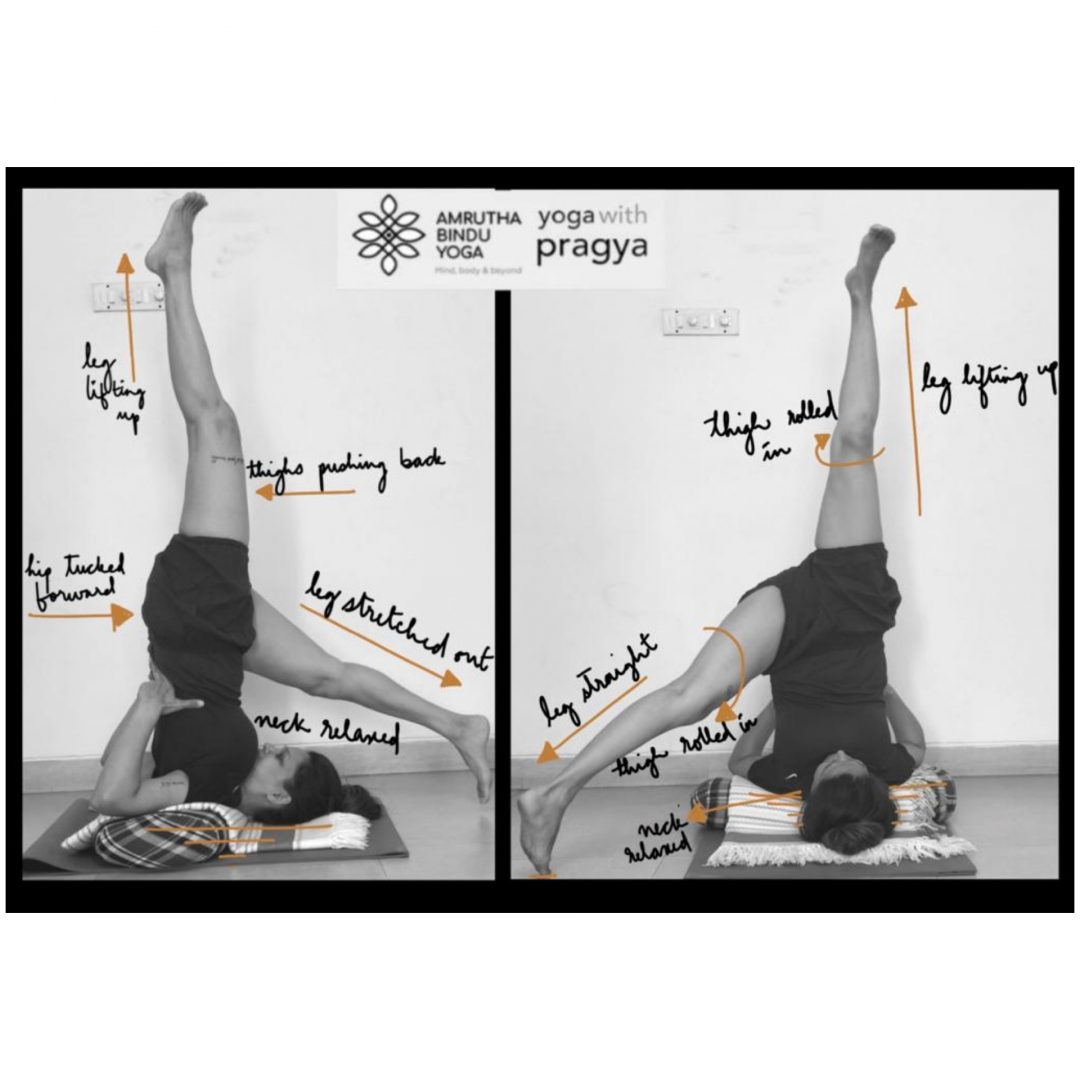It is one of the greatest boons conferred on humanity by our ancient sages. (Light on Yoga p 212)
What is the Sarvangasana Cycle?
Sarvangasana is the Shoulder Stand yoga pose. I’ve written about the etymological structure and why it’s called the ‘Mother of All Asanas’ in this blog. It’s an important posture in the Iyengar style of yoga, practiced every day except during the menstrual cycle. Iyengar yoga practitioners practice the sirsasana – sarvangasana – halasana sequence every day. The Sarvangasana Cycle can be practiced once you’re reasonably comfortable with the alignment of the Sarvangasana.
Benefits of Practicing the Sarvangasana Cycle (and not just plain ol’ Sarvangasana)
I’m a great believer that some yoga is better than no yoga. So if the steps in the Sarvangasana Cycle are too challenging for you, by all means practice only the Sarvangasana. In this online class I break down the Sarvangasana and take you through it step-by-step so that you can focus on the alignment and do the Sarvangasana safely.
The Sarvangasana Cyle brings with it all the benefits of yoga inversions such as
- Better blood flow.
- Rejuvenation of the body.
- Calming down the nervous system.
- Balancing the hormones.
The added benefits are:
- A sense of fearlessness in the practitioners.
- Improved flexibility.
- Improved balance.
- Great to tone and strengthen the leg msucles.
- Boon for the kidneys.
As a practitioner I would say that these variations help us inculcate more control over our bodies, becuase they require us to use more of our core strength, or cultivate the necessary core strength. This also requires us to asses whether we are strong/flexible enough to take the practice to the next level, and if not, then what do we need to get there? In this way the Sarvangasana Cycle teaches us to be reflective about our practice.
The Steps in the Sarvangasana Cycle
The Sarvangasana Cycle consists of variations of the pose that are practiced when Sarvangasana is practiced during the daily practice. We’ve designed our immunity sequence to be accessible for all levels of yoga practitioners.
Eka Pada Sarvangasana (One-Legged Shoulder Stand)
In this variation (shown on the left), one leg is brought down to rest on the floor similar to Halasana. The other leg should be absolutely straight. This posture draws upon the the flexibility of the hamstrings and the strength of the quadriceps muscles too.
Parsva Eka Pada Sarvangasana (Side One-Leg Shoulder Stand)
In this variation (shown on the right), one leg is brought down to the side of the body, diagonal from the trunk. As with all Sarvangasana variations, this requires control and strength of the core muscles, but this variation also requires an flexible hip joint.
Contraindications
The contraindications that apply for Sarvangasana apply to the variations, such as:
- Should not be done during the menstrual cycle.
- Shouldn’t be done if you have diarrhea.
- Shouldn’t be done when you have a headache or a migraine.
Busting the Myths
When students first start practicing these variations there is a rush to touch the toes to the floor. This compromises the alignment of the raised leg. Read on for some more practice pointers.
Practice Pointers
- The variations can be performed after staying in the Sarvangasana for 5-10 minutes.
- Do them for 30 seconds on each side.
- If your leg doesn’t reach the floor use a stool or chair under it (see video).
Stay tuned for more from our Yoga to Boost Immunity Sequence.
Follow Amrutha Bindu Yoga here.
Follow Medha Bhaskar here.
Follow me (Pragya Bhatt) here.

No Comments